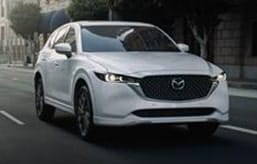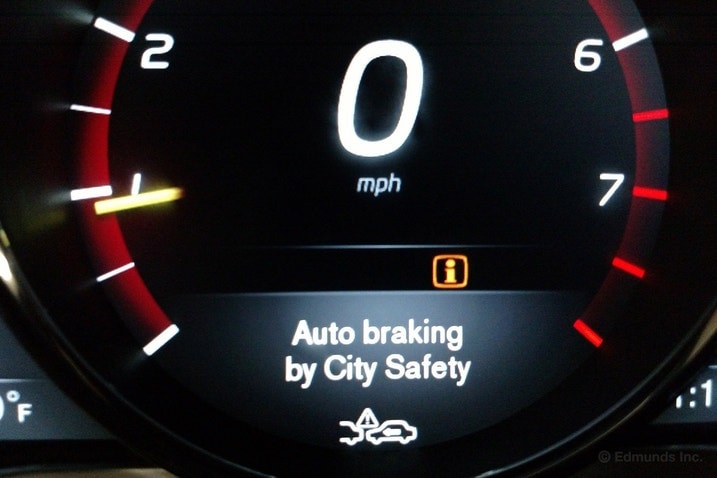- Features like adaptive cruise control don't do much to make driving safer, per a new study from the Insurance Institute for Highway Safety.
- Instead, features that intervene when detecting a potential collision, like automatic emergency braking, do much more.
- The IIHS argues that some driver aids can be improved to enhance safety.
IIHS Finds Automation Does Little to Make Your Car Safer
Automated driving features are more of a luxury, according to the Institute
The Insurance Institute for Highway Safety (IIHS) and Highway Loss Data Institute (HLDI) have published a study based on crash records and insurance data showing that “partial automation systems” don’t do much for safety. Rather, features like adaptive cruise control (ACC) are not critical in preventing an accident and are more for driver comfort than they are safety. “Everything we’re seeing tells us that partial automation is a convenience feature like power windows or heated seats rather than a safety technology,” IIHS President David Harkey said.
First, we must clarify what the IIHS means when it says “partial automation systems.” Its findings, and those of the HLDI, package these features as items that are often used selectively by drivers. They include technology like adaptive cruise control, automatic lane centering, and automatic steering assist. These features are contrasted by what the institutions define as “crash avoidance features” that activate when these systems determine a collision is possible or imminent. These include front and rear automatic emergency braking (AEB), blind-spot warning and lane departure prevention.
A 2021 HLDI study monitored the effects of partial automation systems and crash avoidance features in BMW, Mini and Nissan models, finding that the automation systems didn't provide additional safety benefits compared to just using the crash avoidance features. IIHS’ own study from July 2024 confirms these findings, which is based on the same set of vehicles and systems as the HLDI study (model year 2017-2019 Nissan Rogues with and without ProPilot Assist and 2013-2017 BMWs and Minis with and without Driving Assistant Plus). They show that crash avoidance technology like AEB is unobtrusive during normal driving, so most drivers simply leave them on. This enables the systems to intervene more often than an automated system like adaptive cruise control, which is an on-demand function that is not appropriate for all driving scenarios.
Both studies have shown, broadly, that features that “warn or intervene in an emergency” help reduce the frequency of insurance claims and that the use of these systems compounds to reduce the frequency of claims, if only incrementally. The HLDI found that property damage liability claims — damage claims for vehicles hit by the insured driver — were 8% lower for 2017-2019 Nissan Rogues equipped with forward collision warning and AEB. Rogues with ProPilot Assist active weren't found to be any safer. Collision claim rates for damage to policyholders' vehicles were largely static regardless of the assistance technology employed.
It seems that not all driving aids are created equal, however. In the BMW and Mini vehicles with AEB that were studied, the institute found a 7% drop in collision claim rates and a 13% drop in property damage liability claims. More encouragingly, vehicles with the Driving Assistance package (adds ACC) reduced property damage liability claims by 25%. BMW and Mini models with the more advanced Driving Assistance Plus package (ACC plus front cross-traffic alert and lane-centering) saw a nearly identical reduction.
The IIHS study found much more significant reductions in crash rates, which it used as a metric as opposed to the HLDI’s use of insurance claims. All told, the IIHS reports 49% lower front-to-rear crash rates for Rogues equipped with forward collision warning and AEB, with a 54% reduction for those with forward collision warning, AEB and ACC (compared to those without). While the IIHS found larger reductions in crash rates associated with partial automation, it maintains that “other characteristics of the equipped vehicles or their drivers were responsible for the reduction," including the presence of more advanced headlights bundled with the premium driving systems.
These data from the pair of institutes argue that partial automation systems, which can often be erroneously labeled as “self-driving” systems, are anything but. Rather, because systems like adaptive cruise control “encourage a false sense of security and induce boredom,” they can be viewed more as luxuries than active components in keeping drivers safe. But the IIHS argues that partial automation systems could theoretically be made to take a more active role in crash avoidance, the data surveyed just doesn't support the idea.
The IIHS suggests ACC produces a strong association with positive driving behaviors like less tailgating, longer following distances, and fewer lane changes, all of which can reduce the likelihood of a crash. Lane centering could be made to better prevent side-swipe and run-off-the-road crashes by preempting lane departures instead of intervening after they’ve occurred. In other words, the IIHS finds that these systems can and should be more active in keeping cars in their lanes and away from other traffic. For the moment, its findings hold that “users and regulators alike should not confuse it [partial automation systems] for a safety feature.”
The IIHS study also notes, "The vehicles in these studies range from five to 11 years old, and it’s possible that newer partial automation systems are more effective from a safety perspective. On the other hand, the many years of data that have accumulated for these vehicles make the findings more compelling." In other words, because the underlying hardware and software governing these systems are changing, vehicles with newer systems might actually be safer, but that's harder to discern due to a more limited data set.
Edmunds says
If buyers can take anything from the findings of this study, it is that the systems outlined here are safety nets and that some are better nets than others. It’s important not to fall back on the systems while driving, no matter how safe or easy they might make driving feel.




 by
by  edited by
edited by